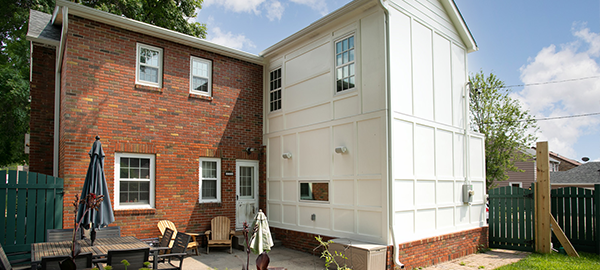How Can Your Window Choice Impact Your Carbon Footprint?

Particularly for eco-conscious homeowners, the additional time spent at home during the pandemic years gave people the chance to dream up ways they can upgrade their homes. Not only do renovations help to modernise and personalise your home, but they can also help to create a more sustainable living space for you and your family.
There are so many different areas of a home that can be altered to help reduce its carbon footprint. From the materials used in decoration, to the way it’s heated and cooled, you’ll need to take a holistic approach in order to design a completely sustainable home. This includes looking at things that may have been an afterthought, such as your windows.
Windows in fact have a crucial part to play in determining the energy efficiency of any home, and it’s important to get your choice of windows right for a number of reasons. Here, we look at how window choice can both help and hinder your home’s efficiency rating and carbon footprint.
Lighting
The positioning of your windows can be key to optimising the efficiency of your home’s energy consumption and ultimately reducing your carbon footprint. Of course, there are so many factors to consider when deciding on your window placement, including practicality and aesthetics. But you should also bear in mind that positioning windows in the wrong place can mean you need to use more energy to provide lighting for your home during the day.Consider installing more or bigger windows in the rooms that you use most often. For many people, this could be a home office, or living area. Increasing the amount of natural light in your home will mean that you’re less reliant on artificial lighting, which can help to trim down your energy usage.
Reducing heat loss
As well as helping to let in more natural light, some windows are specifically designed to keep as much heat inside the home as possible. Improving your home’s heat retention will not only mean your energy consumption will be reduced, but it’ll also save you money on household bills. It’s estimated that replacing single glazing with double glazing will save you around $00-$250 per year.
Double glazing also means that less heat gets wasted, thus reducing your overall carbon footprint – good for the planet as well as your wallet.
What about the frames?
Believe it or not, even your choice of frame can have a bearing on the eco credentials of your home. Before the windows are installed, you should carefully consider which material would work best, not only in terms of design, but also with regards to sustainability. First and foremost, you may look to buy products made from recycled materials, to help reduce the amount of new raw materials you’re using in your renovation.
Beyond that, some materials will naturally be better for the environment than others. For example, wooden frames are often a popular choice for eco-conscious homeowners, since they’ll absorb CO2 and are made up of natural materials. But it’s worth noting that wooden frames will require more maintenance than many metals or other materials, so bear this in mind when making your choice.
To sum up
As we’ve seen, your window choice can go a long way to helping reduce both your energy bills and your carbon footprint. To ensure that your windows are well-fitted and work as efficiently as possible, be sure to have them installed by a professional, and seek advice on how best to maintain them once installed.

